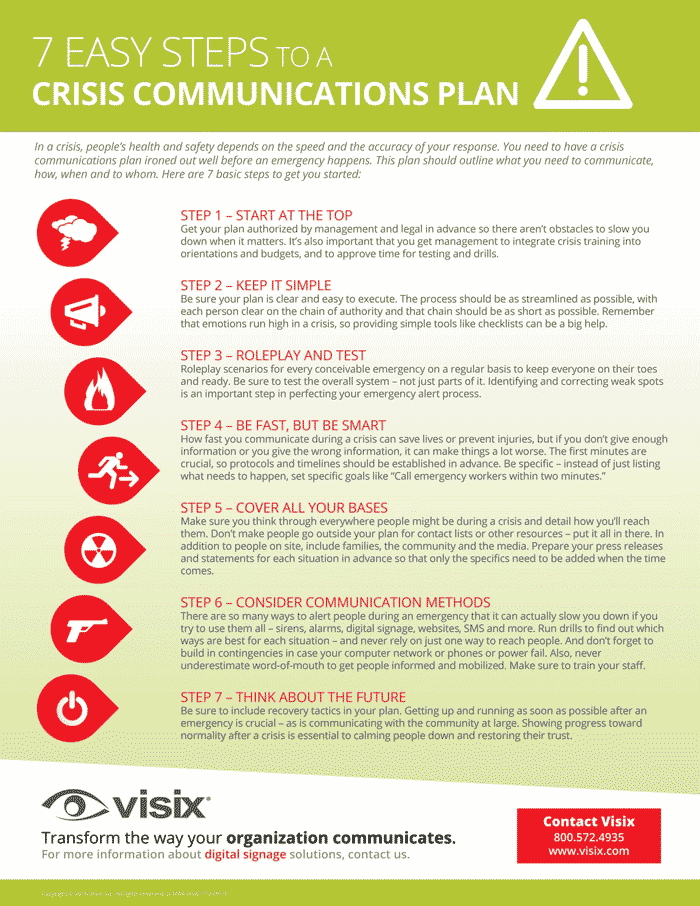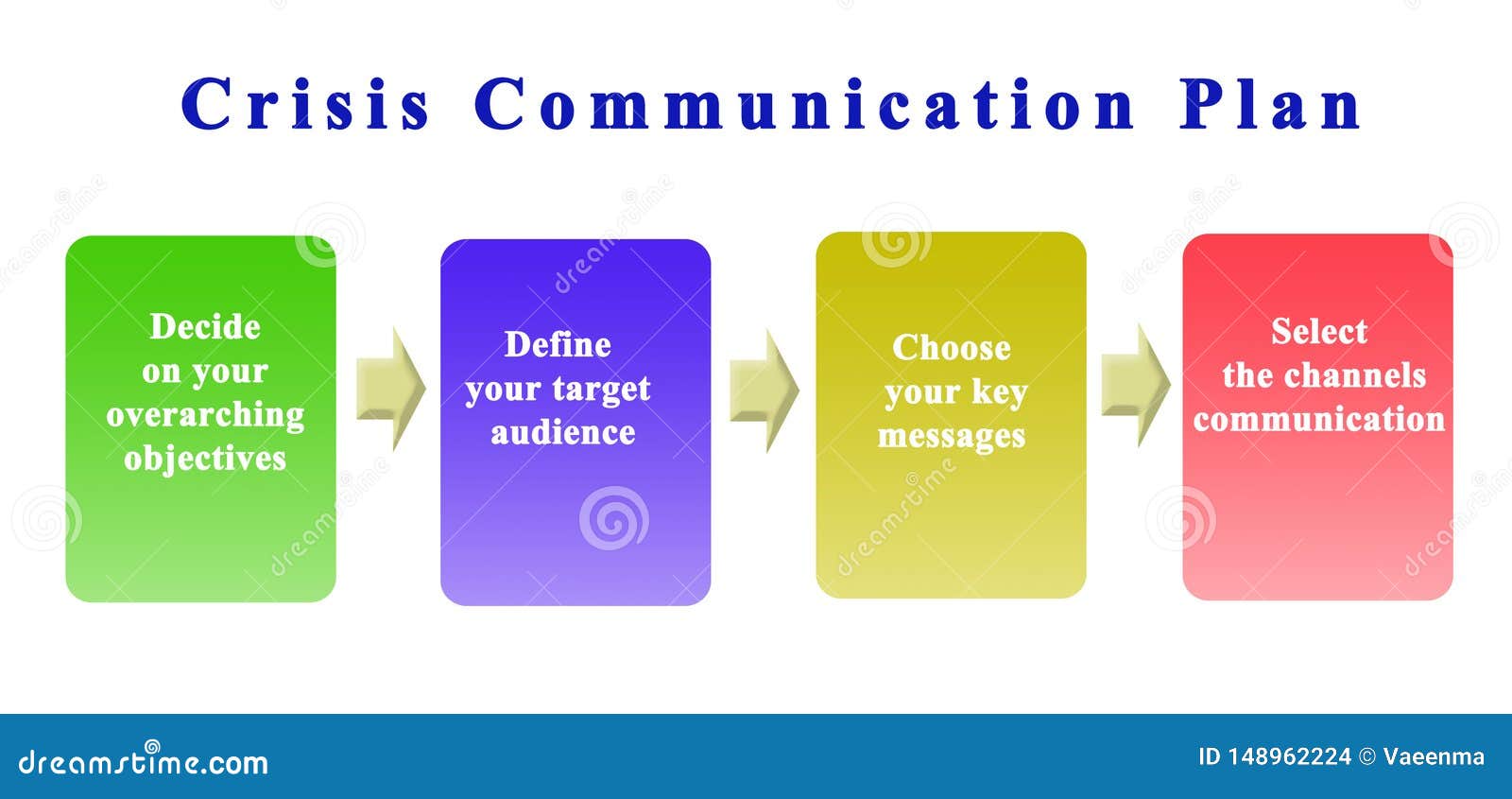
Developing a Crisis Communication Plan: Your Essential Guide to Navigating Any Storm
Imagine this: You’re running your business or organization smoothly, things are going well, and then, without warning, disaster strikes. It could be a product recall, a data breach, a public scandal, a natural disaster affecting your operations, or even a negative social media storm. In moments like these, panic can set in, and without a clear strategy, your reputation, trust, and even your very existence could be at stake.
This is where a robust Crisis Communication Plan becomes your lifeline. It’s not just a nice-to-have; it’s an absolute necessity in today’s fast-paced, always-on world. For beginners, the idea of developing such a plan might seem daunting, but it’s a process that breaks down into manageable, actionable steps.
This comprehensive guide will walk you through everything you need to know about developing an effective crisis communication plan, designed to protect your organization’s reputation and ensure clear, consistent communication when it matters most.
What Exactly is a Crisis Communication Plan?
At its core, a Crisis Communication Plan is a pre-defined strategy and set of protocols that an organization uses to manage and control the flow of information during a major disruptive event. Think of it as your organization’s emergency playbook for communication.
It outlines who says what, to whom, when, and through which channels, ensuring that your messages are accurate, consistent, and delivered effectively to all relevant stakeholders. It shifts your organization from a reactive, chaotic response to a proactive, controlled, and strategic one.
Why is a Crisis Communication Plan Absolutely Essential?
In a world where news travels at the speed of a tweet, and a single misstep can go viral in minutes, the importance of preparedness cannot be overstated. Here’s why having a crisis communication plan is non-negotiable:
- Minimizes Damage: A swift, well-executed communication response can significantly limit negative impacts on your reputation, financial standing, and operations.
- Maintains Trust and Credibility: Being transparent, honest, and proactive during a crisis builds trust with your employees, customers, investors, and the public. Hiding information or fumbling your response erodes it.
- Ensures Consistency: Without a plan, different people might say different things, leading to confusion, misinformation, and a loss of control over the narrative. A plan ensures everyone is on the same page.
- Protects Your Reputation: Your reputation is one of your most valuable assets. A crisis plan helps you safeguard it by demonstrating competence, empathy, and accountability.
- Supports Employees: During a crisis, your internal team needs clear, timely information. A plan ensures they are kept in the loop, reducing anxiety and maintaining morale.
- Facilitates Faster Recovery: By managing the communication effectively, you can accelerate the process of returning to normal operations and rebuilding confidence.
- Legal and Regulatory Compliance: In some industries, having a crisis plan (especially regarding data breaches or safety incidents) might be a regulatory requirement.
Key Steps to Developing Your Crisis Communication Plan
Building a robust crisis communication plan involves several crucial stages. Let’s break them down into actionable steps that even a beginner can follow.
Step 1: Conduct a Comprehensive Risk Assessment
Before you can plan for a crisis, you need to understand what crises you might face. This involves brainstorming potential scenarios that could negatively impact your organization.
- Brainstorm Potential Crises: Gather key stakeholders (leadership, department heads) and brainstorm a wide range of potential crises. Think broadly:
- Operational: Product recalls, supply chain disruptions, equipment failure, workplace accidents.
- Financial: Bankruptcy, major financial losses, fraud.
- Technological: Data breaches, cyberattacks, system outages.
- Reputational: Negative media coverage, public scandal, harmful social media campaigns.
- Natural Disasters: Fires, floods, earthquakes, power outages impacting operations.
- Human-Caused: Employee misconduct, workplace violence, terrorism threats.
- Legal/Regulatory: Lawsuits, government investigations, compliance violations.
- Assess Likelihood and Impact: For each potential crisis, consider:
- How likely is it to happen? (Low, Medium, High)
- If it did happen, what would be the potential impact on your operations, finances, and reputation? (Low, Medium, High)
- Prioritize Scenarios: Focus your planning efforts on high-likelihood, high-impact scenarios first. These are your "worst-case" but most probable events.
Step 2: Assemble Your Crisis Communication Team
You can’t handle a crisis alone. A dedicated team ensures coordinated efforts and clear lines of responsibility.
- Identify Key Members: Your core team should typically include:
- CEO/Top Leadership: For ultimate approval and strategic direction.
- Head of Communications/PR: The lead strategist for messaging and media relations.
- Legal Counsel: To advise on legal implications and compliance.
- Head of HR: For internal communication and employee support.
- Head of Operations/Relevant Department: To provide factual information about the incident.
- IT/Cybersecurity Expert: For data breaches or tech-related crises.
- Define Roles and Responsibilities: Clearly outline who is responsible for what during a crisis. This prevents confusion and ensures critical tasks are covered. For example:
- Who drafts initial statements?
- Who handles social media monitoring?
- Who manages media inquiries?
- Who communicates with employees?
- Create a Contact List: Compile up-to-date contact information for all team members, including after-hours numbers.
Step 3: Identify and Train Your Spokesperson(s)
Your spokesperson is the public face and voice of your organization during a crisis. This is a critical role that requires specific skills.
- Choose Wisely: Select individuals who are:
- Credible and Knowledgeable: They must understand the situation and be perceived as trustworthy.
- Calm and Composed: They need to remain level-headed under pressure.
- Articulate: Able to communicate complex information clearly and concisely.
- Empathetic: Capable of conveying genuine concern.
- Designate Primary and Secondary Spokespersons: Have backups in case the primary spokesperson is unavailable.
- Provide Media Training: This is non-negotiable. Training should cover:
- How to deliver messages clearly and concisely.
- How to handle tough questions and hostile interviews.
- Body language and vocal tone.
- The importance of staying "on message."
- Understanding different media channels (TV, radio, print, social media).
Step 4: Develop Key Messages and Holding Statements
Preparation is key to a swift response. Having pre-approved messages can save critical time.
- Draft Holding Statements: These are generic, "first response" statements you can adapt quickly. They acknowledge the situation, express concern, state that you’re investigating, and promise more information soon.
- Example: "We are aware of the situation and are actively investigating. Our top priority is the safety and well-being of all involved. We will provide further updates as soon as more information becomes available."
- Develop Core Messaging Principles: What do you always want to communicate during a crisis? (e.g., "Safety first," "Transparency," "Accountability," "Working to resolve").
- Anticipate Questions and Prepare Q&A: Based on your risk assessment, brainstorm potential questions from media, customers, and employees. Draft clear, concise answers for each. This forms your "talking points."
- Emphasize Accuracy and Empathy: All messages must be factual, truthful, and convey genuine concern for those affected. Avoid speculation or blame.
Step 5: Identify Your Stakeholders and Communication Channels
Who do you need to communicate with, and how will you reach them?
- Identify Stakeholder Groups:
- Internal: Employees, board members, volunteers.
- External: Customers, clients, suppliers, investors, media, local community, regulators, government officials, general public.
- Determine Preferred Communication Channels for Each Group:
- Employees: Internal email, intranet, direct managers, town hall meetings, dedicated internal chat groups.
- Customers: Website updates, email, social media, dedicated customer service lines.
- Media: Press releases, media advisories, press conferences, direct media outreach.
- General Public: Website, social media, news channels.
- Regulators/Legal: Formal letters, direct communication as required.
- Create Pre-Approved Templates: Have templates for press releases, social media posts, internal memos, and website updates ready to be filled in.
Step 6: Establish Monitoring and Listening Protocols
You can’t respond effectively if you don’t know what’s being said about you.
- Implement Media Monitoring: Use services or tools to track mentions of your organization in traditional media (news, TV, radio).
- Set Up Social Media Listening: Utilize social listening tools (e.g., Brandwatch, Meltwater, even Google Alerts) to monitor keywords, hashtags, and mentions across social platforms. This helps you identify emerging issues, track sentiment, and correct misinformation quickly.
- Assign Responsibilities: Clearly define who is responsible for monitoring each channel and how often.
- Establish Alert Systems: Set up alerts for critical keywords so your team is immediately notified of significant developments.
Step 7: Create a "Dark Site" or Crisis Resource Hub
A "dark site" is a pre-built section of your website that is not publicly visible until a crisis hits.
- Pre-Populate with Essential Information: This can include:
- A dedicated crisis statement page.
- Frequently Asked Questions (FAQs).
- Contact information for media inquiries.
- Links to official updates or press releases.
- Resources for affected individuals (e.g., customer support, emergency numbers).
- Benefits: Allows for rapid deployment of accurate information, prevents your main website from being overwhelmed, and provides a single, authoritative source of truth.
Step 8: Practice, Practice, Practice (Simulations & Drills)
A plan is only as good as its execution. Regular practice is crucial.
- Conduct Tabletop Exercises: Gather your crisis team and walk through a simulated crisis scenario. Discuss how you would respond at each stage.
- Run Full-Scale Drills: For higher-impact scenarios, conduct more realistic drills involving mock media inquiries, social media engagement, and internal communication tests.
- Test Communication Channels: Ensure your internal alert systems, email lists, and contact trees work correctly.
- Identify Gaps: Use these exercises to pinpoint weaknesses in your plan, identify training needs, and refine your processes.
Step 9: Review and Update Regularly
A crisis communication plan is a living document, not a static one.
- Annual Review: Schedule at least an annual review of your entire plan.
- Post-Crisis Review: After any real crisis, conduct a thorough "post-mortem" analysis. What went well? What didn’t? What could be improved? Update your plan based on these learnings.
- Reflect Organizational Changes: Update contact lists, team members, and potential risks as your organization evolves.
Key Elements to Include in Your Crisis Communication Plan Document
When you compile your plan, make sure it includes the following sections:
- Introduction/Purpose: A brief overview of the plan’s objectives.
- Crisis Communication Team Contact List: Up-to-date names, roles, and 24/7 contact information.
- Spokesperson Designations: Who are the primary and secondary spokespersons?
- Crisis Scenarios & Triggers: A summary of your risk assessment and what constitutes a "crisis" requiring plan activation.
- Crisis Activation Protocol: Clear steps on how the plan is initiated.
- Communication Flowchart/Decision Tree: Visual representation of who communicates with whom, and when.
- Key Message Framework: Core messaging principles and pre-approved holding statements.
- Anticipated Q&A: Comprehensive list of potential questions and approved answers.
- Stakeholder Contact Lists: Organized lists of internal and external stakeholders with their preferred communication channels.
- Media Contact List: Relevant journalists, news outlets, and industry publications.
- Social Media Guidelines & Protocols: How to monitor, respond, and engage on social media during a crisis.
- Templates: Pre-written templates for press releases, social media posts, internal memos, etc.
- Monitoring Tools & Protocols: Details on media and social listening tools and responsibilities.
- Dark Site/Crisis Hub Information: Details on your dedicated crisis website section.
- Training & Exercise Schedule: Plan for future drills and training sessions.
- Review & Update Schedule: When and how the plan will be reviewed and updated.
- Legal Review Section: Space for legal counsel to sign off on the plan.
The Crucial Role of Social Media in Crisis Communication
In today’s digital age, social media is often where crises break first and spread fastest. Your plan must address it specifically.
- Real-Time Monitoring: Social media listening is your earliest warning system. You need to be aware of negative sentiment, rumors, or direct complaints as soon as they emerge.
- Rapid Response: Social media demands quick, but thoughtful, responses. Generic, automated replies can do more harm than good.
- Choose Your Platform Wisely: You don’t have to respond on every platform. Focus on where your audience is most active and where the crisis is primarily unfolding.
- Be Empathetic and Human: Avoid robotic language. Show genuine concern, apologize if appropriate, and demonstrate that you are taking the situation seriously.
- Correct Misinformation: Address false information swiftly and directly, but avoid getting into arguments. State the facts calmly.
- Escalation Protocols: Know when to move a conversation off public channels (e.g., to direct message or customer service) and when to involve your core crisis team.
- Consistency Across Channels: Ensure your messages on social media align perfectly with your official statements elsewhere.
After the Crisis: Recovery and Learning
The crisis isn’t truly over when the immediate threat passes. Effective communication extends into the recovery phase.
- Debrief and Analyze: Once the dust settles, conduct a thorough post-crisis analysis with your team.
- What happened?
- How well did the plan work?
- What were the successes?
- What were the failures or areas for improvement?
- What was the final impact on the organization?
- Follow-Up Communication: Don’t go silent. Continue to provide updates on recovery efforts, lessons learned, or preventative measures being implemented. This reinforces transparency and rebuilding trust.
- Apology and Accountability (If Needed): If your organization was at fault, a sincere and well-communicated apology is crucial for rebuilding trust. This should be more than just words; it should outline actions taken to prevent recurrence.
- Monitor Long-Term Sentiment: Continue to monitor media and social channels to gauge public perception and ensure a full recovery of your reputation.
- Update the Plan: Incorporate all lessons learned from the crisis into your existing plan. This makes your next response even stronger.
Conclusion: Don’t Wait for the Storm
Developing a crisis communication plan might seem like a significant undertaking, but it’s an investment that pays dividends when you need it most. It transforms potential chaos into controlled communication, protects your hard-earned reputation, and ensures your organization can weather any storm.
Don’t wait for a crisis to strike to realize you need a plan. Start today. By following these steps, even as a beginner, you can build a robust crisis communication strategy that safeguards your future and builds resilience in an unpredictable world. Your reputation, and the trust of your stakeholders, depend on it.



Post Comment